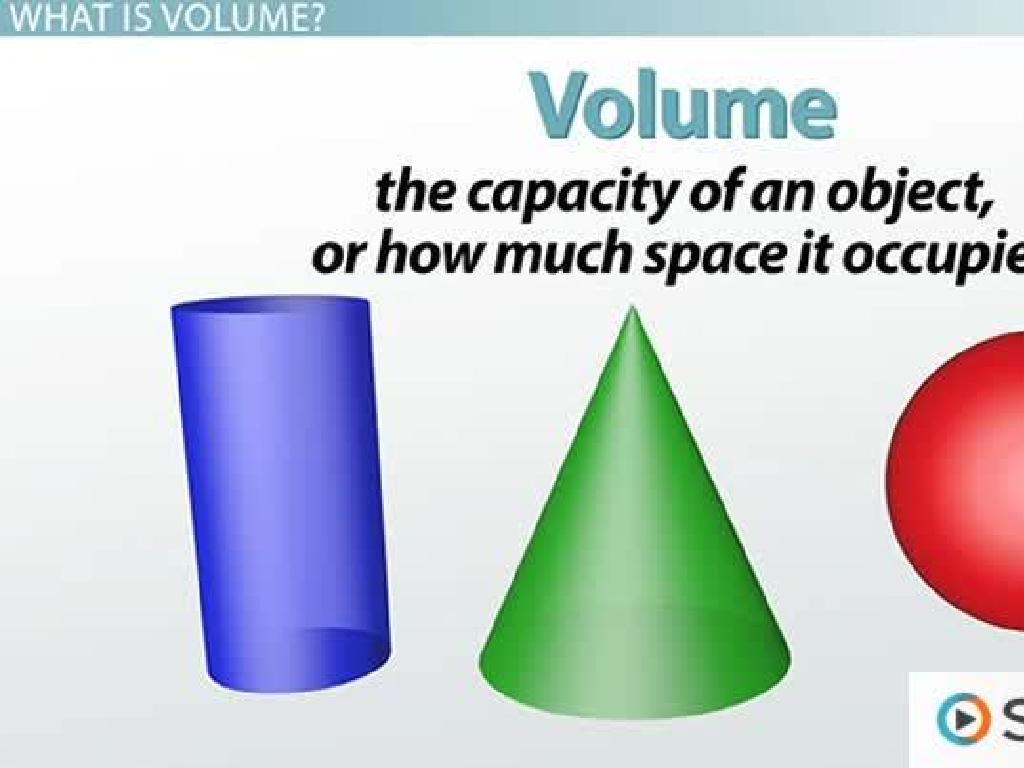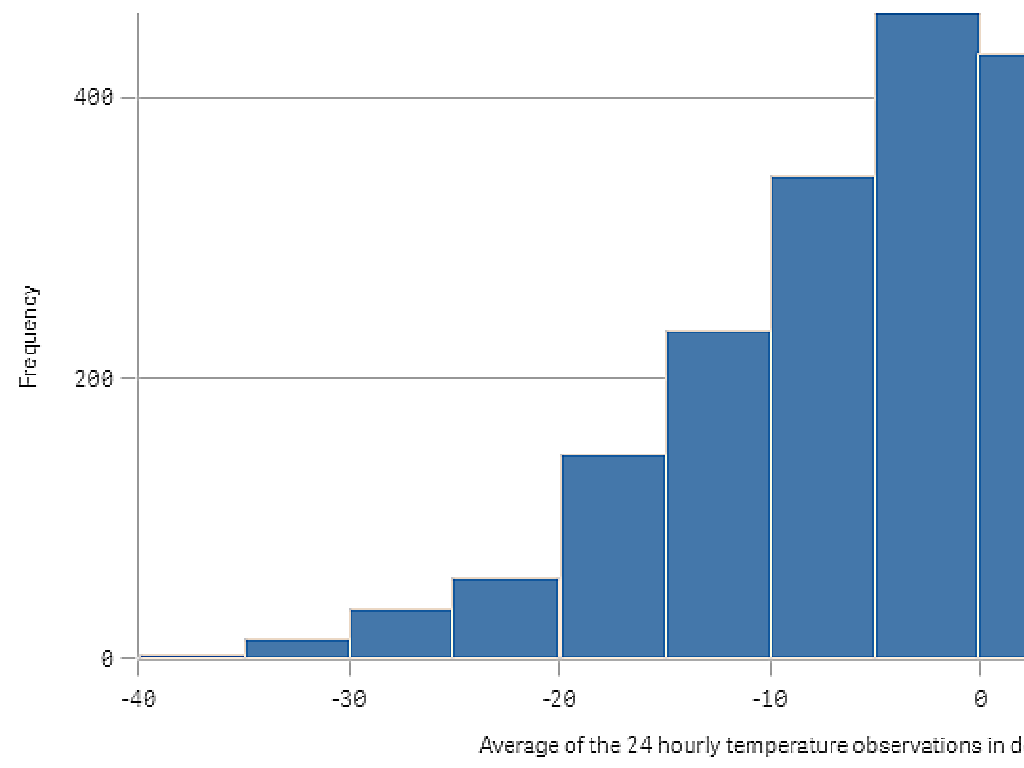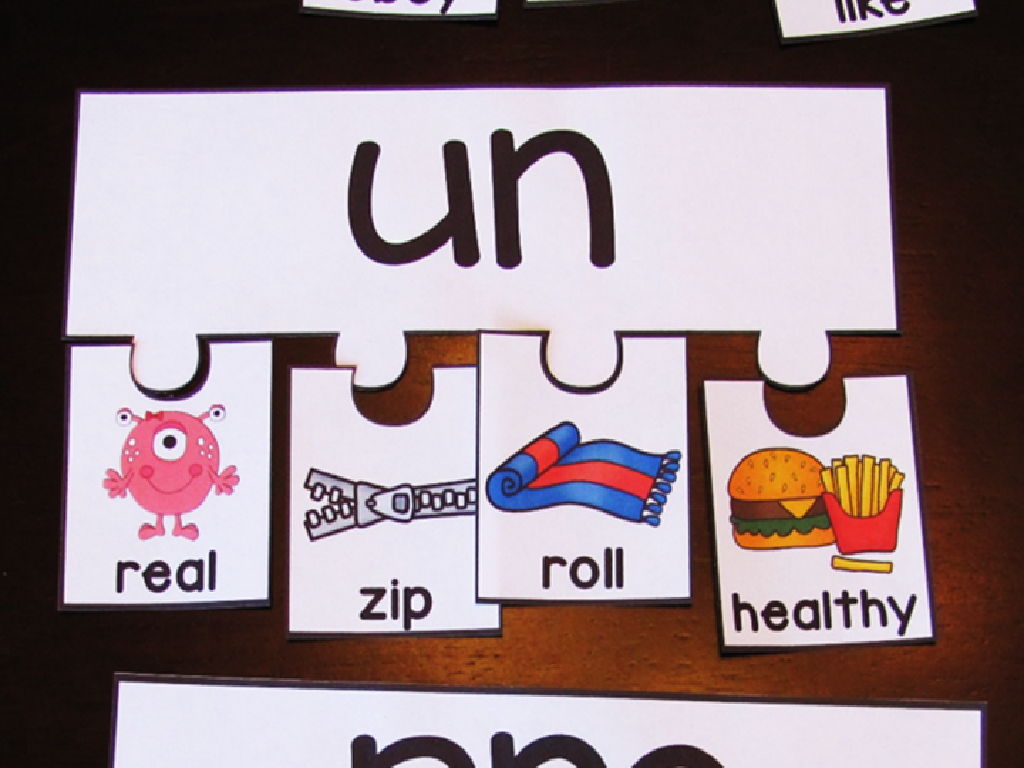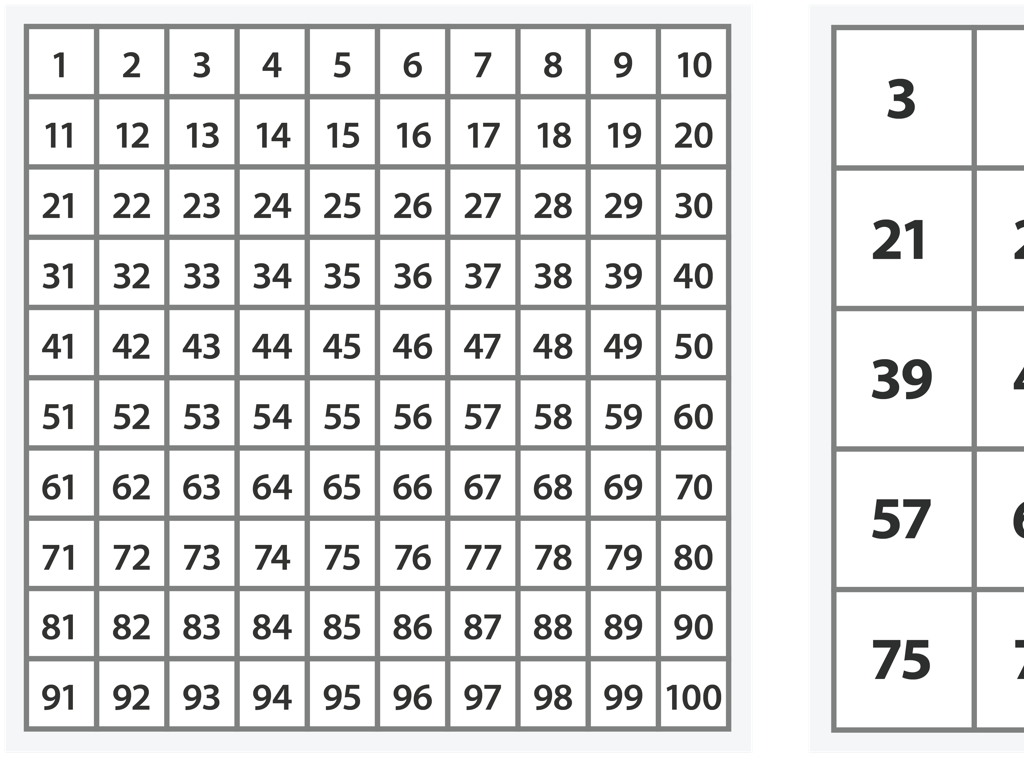Volume And Surface Area Of Similar Solids
Subject: Math
Grade: Eighth grade
Topic: Surface Area And Volume
Please LOG IN to download the presentation. Access is available to registered users only.
View More Content
Exploring 3D Shapes: Volume & Surface Area
– Understanding 3D shapes
– Objects with length, width, & height
– Defining volume
– Volume measures space inside a shape
– Explaining surface area
– Surface area is the sum of all faces
– Significance of volume & surface area
– Used in real-life for packaging, filling, etc.
|
This slide introduces the fundamental concepts of volume and surface area in the context of three-dimensional shapes. Begin by discussing the characteristics of 3D shapes, emphasizing their dimensions. Explain that volume is a measure of the capacity of a shape, which is crucial when determining how much a container can hold. Surface area is the total area of all the surfaces of a shape, important for tasks such as painting or wrapping. Highlight the practical applications of these concepts in everyday life, such as packaging goods, constructing objects, and filling spaces. Encourage students to think of examples where they encounter volume and surface area in their daily activities.
Exploring Similar Solids
– Define similar solids
– Solids with the same shape but different sizes
– Properties of similar solids
– Ratios of corresponding lengths are equal
– Real-life examples
– Miniature models to actual buildings
– Comparing volumes and areas
– How does size affect volume and surface area?
|
This slide introduces the concept of similar solids, which are three-dimensional shapes that have the same shape but may differ in size. Emphasize that for two solids to be similar, all corresponding lengths must be in the same ratio. Provide real-life examples such as scale models of buildings, cars, or other objects that students can relate to. Discuss how the properties of similar solids affect their volume and surface area, and how understanding these concepts is important in various real-world applications. Encourage students to think of other examples and consider how scaling objects up or down impacts their volume and surface area.
Calculating Volume of Solids
– Volume formulas for solids
– V = lwh for a box, V = Àr^2h for a cylinder
– Examples: Volume calculations
– Calculate volume of a box (2x3x4) and a cylinder (r=2, h=5)
– Practice: Calculate volume
– Solve for volume of a given solid shape
– Understanding volume concept
|
This slide introduces students to the concept of volume as a measure of the space occupied by a 3D object. Start by discussing the volume formulas for common solids such as boxes (rectangular prisms) and cylinders. Provide step-by-step examples of volume calculations using these formulas. Then, present a practice problem for the students to solve, reinforcing their understanding of the concept. Emphasize the units used in volume calculations and ensure students grasp the importance of consistency in units. The slide aims to build a solid foundation for students to approach volume calculation with confidence.
Calculating Surface Area of Solids
– Formulas for common solids
– Spheres: 4Àr², Cylinders: 2Àrh+2Àr²
– Examples of surface area calculations
– Calculate the surface area of a sphere with radius 3 cm
– Practice problem on surface area
– Find the surface area of a cylinder with radius 4 cm and height 5 cm
– Understanding ratios in similar solids
|
This slide introduces students to the concept of surface area and its calculation for various common solids. Start by explaining the formulas for the surface area of spheres and cylinders. Provide step-by-step examples to demonstrate how to apply these formulas. Then, present a practice problem for students to solve, reinforcing their understanding of the concept. Emphasize the importance of recognizing and applying the correct formula for each type of solid. Additionally, discuss how the surface area of similar solids is related by the square of the ratio of their corresponding linear dimensions. This will prepare students for more complex problems involving ratios and proportions in similar solids.
Exploring Similar Solids: Volume & Surface Area
– Ratios in volume & surface area
– Volume ratio of similar solids is the cube of the scale factor, while surface area ratio is the square.
– Impact of dimension changes
– If one dimension doubles, volume increases eightfold, but surface area only quadruples.
– Problem-solving with similar solids
– Use ratios to solve problems involving volumes and areas of similar solids.
– Compare and contrast exercises
|
This slide introduces students to the concept of how volume and surface area ratios are related to the scale factor in similar solids. Emphasize the mathematical relationship between changing dimensions and their impact on volume and surface area. Provide examples to illustrate how volume increases by the cube of the scale factor, while surface area increases by the square. Encourage students to apply these concepts to compare and contrast exercises, enhancing their problem-solving skills. Prepare to guide students through a series of problems where they calculate and compare the volume and surface area of similar solids with different dimensions.
Real-World Applications of Volume & Surface Area
– Daily life applications
– Cooking, packing, building models
– Engineers & architects’ usage
– Designing buildings, bridges, and furniture
– Class activity: Identify & calculate
– Find objects, calculate their volume & surface area
– Understanding practical relevance
|
This slide aims to show students the practical applications of volume and surface area in everyday life and professional fields. Highlight how these concepts are used in cooking (measuring ingredients), packing (box sizes), and model building. Discuss the importance for engineers and architects in designing safe and efficient structures. The class activity involves students identifying everyday objects, calculating their volume and surface area, and understanding the practical relevance of these measurements. For the activity, consider objects like cereal boxes, cans, and balls. Provide guidelines for the calculations and encourage students to discuss how different shapes can be more efficient for certain purposes.
Class Activity: Building Similar Solids
– Craft similar solids with clay
– Calculate volume of your models
– Use formulas: V = lwh for volume
– Determine surface area of solids
– Use formulas: SA = 2lw + 2lh + 2wh for surface area
– Present findings to the class
|
This hands-on activity is designed to help students understand the concepts of volume and surface area in a tangible way. Provide modeling clay and ask students to create two or more solids that are similar in shape but different in size. Once the models are created, guide them through the process of calculating the volume and surface area using the appropriate formulas. Encourage students to write down their calculations and be prepared to explain their process when sharing with the class. This will reinforce their understanding of the mathematical concepts and allow them to see the practical application. For the teacher: Prepare a list of possible shapes students can create, ensure they understand the formulas for volume and surface area, and be ready to assist with calculations. Have a discussion afterwards about how changing dimensions affects volume and surface area.
Review & Homework: Exploring Solids
– Review key concepts and formulas
– Engage in a Q&A session
– Homework: Measure a home object
– Find any solid object at home
– Calculate volume & surface area
– Use formulas to calculate its volume and surface area
|
This slide aims to consolidate the students’ understanding of the volume and surface area of similar solids. Begin by reviewing the key concepts and formulas covered in class, ensuring that students are clear on how to apply them. Encourage active participation during the Q&A session to address any uncertainties. For homework, students are tasked with finding a solid object at home, measuring its dimensions, and then applying the learned formulas to calculate its volume and surface area. This practical exercise will help them understand the real-world application of these mathematical concepts. Provide detailed guidelines on how to measure objects accurately and how to record their findings.





